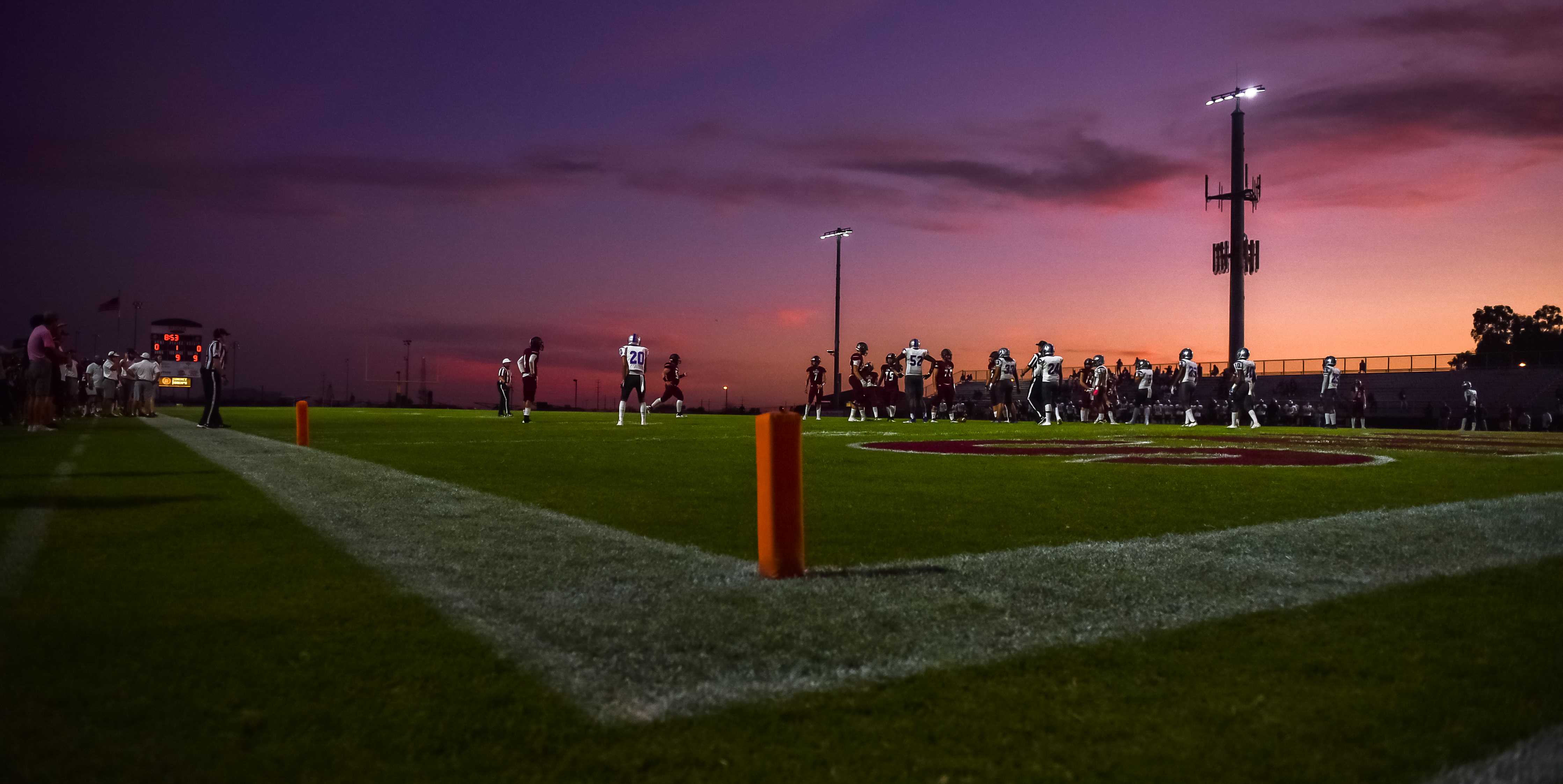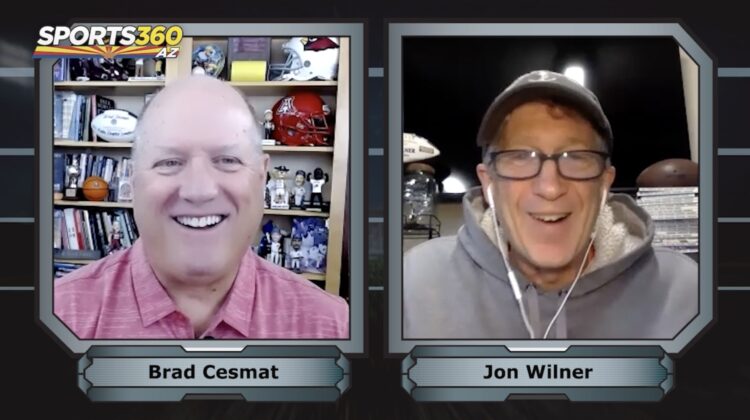The Hotline mailbag publishes weekly. Send questions to wilnerhotline@
Please note: Some questions have been edited for clarity and brevity.
The scheduling agreement between the Pac-12 and the Mountain West for the 2024 season has an option for 2025, but the window to extend the deal expires on Sept. 1. Do you expect a resolution in the coming days? — Thx. @TBM_JY
The situation is tricky, and we’ll explain momentarily. But as a matter of legal fact, that’s correct: The two sides have approximately one week to decide whether to extend the deal by one year.
The contract includes the term “Outside Date,” which is effectively the end of the contract. Article IV, entitled “Term; Termination,” includes the following passage:
“For purposes of this Agreement, the ‘Outside Date’ shall be August 1, 2025. Notwithstanding the foregoing, if MWC and Pac-12 mutually agree in a signed writing on or prior to September 1, 2024, the ‘Outside Date’ may be extended to August 1, 2026.”
Discussions are ongoing, according to sources. But we’re skeptical of swift resolution and not convinced it really matters.
Although Sept. 1 looms as a legal deadline, the Pac-12 schools are exploring all options for their schedules in 2025. Those options relieve the pressure to make a final determination by the date listed in the contract.
Also, they could let the deadline pass with the Mountain West and simply create new terms for their final bridge season. (The grace period for WSU and OSU to compete as a two-team conference expires in the summer of 2026.) After all, the arrangement works well for both sides, providing quality competition without significant travel.
So why not extend the deal immediately?
Well, the Mountain West has a vote, too. It’s easy to envision the conference declining an extension at the deadline, then holding out for better terms. If the Pac-12 schools can’t find an alternative scheduling arrangement — perhaps with the Big 12 — they would have no choice but to accept the terms imposed by the Mountain West.
Everything is a negotiation, right?
This much is sure: The Cougars and Beavers need games.
At this point, WSU has six opponents lined up for 2025, by our unofficial count: North Texas, San Diego State, Idaho, Washington, Virginia and Oregon State.
Meanwhile, the Beavers have at least six opponents on the schedule: Cal, Fresno State, Houston, Texas Tech and Oregon, plus Washington State. (Portland State is also a possibility.)
So the Cougars need six more games and the Beavers need at least five.
The agreement with the Mountain West in 2024 provided six games for each of the two schools. A renewal of the deal — or a one-year agreement that features new terms — would seem to solve the math problem.
Don’t be surprised if the two sides announce a formal extension in the next week. But there are options available for the Cougars and Beavers if the deadline comes and goes without news.
How exactly could the Pac-12 schools end up in the College Football Playoff, since they are not part of a full conference? — @CelestialMosh
For the 2024-25 seasons, the NCAA considers the Pac-12 an official conference. But the NCAA doesn’t run the CFP, and there are different rules at play.
The Power Four commissioners (understandably) did not consider a two-team league worthy of receiving an automatic bid. As a result, the Pac-12 was denied the CFP access granted to the Group of Five, which receives one automatic bid for its highest-ranked team.
Instead, the Pac-12 schools are considered Independents for the purposes of the CFP, meaning they’re comparable to Notre Dame: The only road into the CFP is through the at-large pool.
Given that their schedules aren’t nearly as stout as teams in the Power Four (or Notre Dame), the Cougars and Beavers probably need 11 wins to secure an at-large berth as one of the seven highest-ranked non-champions.
A path into the playoff exists, but traversing it successfully seems implausible.
Are Washington and Oregon receiving a half-share of Big Ten revenue from the CFP and the NCAA Tournament, as they are with the media rights deal? Either way, what will their total income be compared to those who went to other conferences? — @draywilson29
Excellent question that cuts to the heart of the financial calculation for the Huskies and Ducks — and for Cal and Stanford in the ACC.
In each case, the teams are receiving partial shares of the media rights revenue (i.e., regular-season broadcast contracts) but full shares of the postseason revenue from the CFP and March Madness.
For Cal and Stanford, the partial shares work out to 33 percent for the first seven years before climbing for two years and then reaching 100 percent for the last three years of the agreement.
Washington and Oregon are half-share members of media revenue for the entirety of the Big Ten’s six-year agreement with Fox, CBS and NBC — key point: The Los Angeles schools are full-share members — but they will receive the full amount of the conference’s CFP and NCAA revenue.
The total haul for UW and Oregon won’t be substantially larger than what Arizona, ASU, Colorado and Utah receive from the Big 12 — at least not immediately.
Everything changes in the 2026-27 competition year when the new CFP contract kicks in. Under the terms of the revenue-sharing agreement reached this spring, the SEC and Big Ten will receive larger distributions than the ACC and Big 12.
(NCAA Tournament revenue will remain hooked to participation and success.)
All in all, the Huskies and Ducks should collect $60 million annually (approximately) in total Big Ten distributions in the second half of the decade, with the Big 12 schools somewhere in the $50 million range.
But when UW and Oregon become full-share members of the Big Ten in the next contract cycle, the revenue disparity will be enormous.
Regarding games this season for Washington State and Oregon State: Where will the official reviews (replay booth) originate from? — @cubsfan7331
Our understanding is that Pac-12 officials will handle home games for WSU and OSU, both on the field and in the replay booth. When the Cougars and Beavers are on the road, the opponent’s conference will provide the officials and replay support.
(One exception: Big 12 officials are expected to work the 2024 Apple Cup at Lumen Field in Seattle.)
WSU and OSU fans shouldn’t notice any difference compared to past years. The Pac-12 has retained enough staff to support operations at the level both schools are accustomed to.
So expect the standard array of bad calls.
How does the Big Ten’s television deal work for selecting what games to broadcast? I heard that Fox gave away the Oregon-Ohio State game to NBC. What does Fox gain from that move? — @Moneyline_RAY
Good timing for your question, because the Hotline just published a deep dive into the Big Ten’s in-season selection process.
With four broadcast partners (Fox, CBS, NBC and the Big Ten Network), the process is a tad complicated. Also, the conference does not divulge details of the weekly draft. We’re left to collect crumbs left behind by Fox executives when they discuss the situation publicly.
Fortunately, that’s exactly what happened with the Oregon-Ohio State showdown.
First, know this: The Big Ten’s network partners don’t draft games; they draft dates. Fox owned the top three picks and chose Nov. 30 (Ohio State-Michigan) and Sept. 7 (Texas-Michigan) with the No. 1 and 2 selections.
Fox then traded the third pick to NBC in exchange for better options lower in the weekly draft. Why? Because of the location (Eugene), the game wasn’t available for the network’s prized ‘Big Noon’ broadcast window. The West Coast schools aren’t playing home games at 9 a.m.
Naturally, NBC used the No. 3 pick to select Oct. 12 — the date of Ohio State’s visit to Oregon.
But Fox will be just fine this season: It retained the first pick on Nov. 2, giving the network the option to air either Oregon-Michigan or Ohio State-Penn State in the ‘Big Noon’ window.
I suggest reading the Hotline’s article, which includes a breakdown of the number of games on each network.
Which Pac-12 school ends the season with a better record: Washington State or Oregon State? — @cougsguy06
We like WSU, although confidence in that selection could be categorized as fair-to-middlin’.
The Cougars have an experienced head coach (Jake Dickert), whereas the Beavers are depending on a rookie (Trent Bray) to navigate uncharted seas.
The Cougars have an easier schedule, particularly with regard to the rivalry game: They shouldn’t be outclassed by Washington, while the Beavers face a daunting challenge against Oregon.
Overall, WSU’s two-deep possesses more experience and fewer obvious weaknesses than OSU’s core.
That said, nobody should be surprised if the Beavers finish with one or two more victories than the Cougars. The differences are, for the most part, on the margins.
If Washington State and Oregon State are successful in rebuilding the Pac-12 with teams from the Mountain West, could the trickle-down impact the Big Sky? — Kent R
The downstream implications of realignment should never be ignored. The moment a conference loses members, the process of backfilling begins.
There are two possible paths for the Pac-12 rebuild with schools from the Mountain West:
— It could absorb at least nine schools in a reverse merger, with nine being the number needed to legally dissolve the conference and waive the exit fees.
— It could attempt to pick off the top tier of MW football schools (Boise State, San Diego State, Fresno State, etc.).
The second path might leave enough members behind for the league to live on. In that situation, yes: The MW could turn to the Big Sky for reserves.
Would the best of the Big Sky be interested?
The finances required to compete at the FBS level will be extraordinarily steep in the era of revenue-sharing and expanded roster sizes. The math might not work for the Montana schools, for instance.
From here, the MW schools left behind by a Pac-12 raid are more likely to reverse course and seek membership in the Big Sky.
The rebuilt Pac-12 would gobble up what little media rights revenue is available, leaving nothing for the depleted MW.
Financially, an FCS existence might make more sense.
Put another way: The next 12-to-18 months are more likely to have zero impact or a positive impact on the Big Sky than a negative impact.
*** Send suggestions, comments and tips (confidentiality guaranteed) to wilnerhotline@
*** Follow me on Twitter/X: @WilnerHotline
Related posts:
 Wilner-How a package of radical reforms proposed by the Pac-12 a decade ago could have changed the trajectory of college sports
Wilner-How a package of radical reforms proposed by the Pac-12 a decade ago could have changed the trajectory of college sports
 Wilner Mailbag: The end of Pac-12 basketball (or not?), timing for WSU and OSU, Big Ten valuations and more
Wilner Mailbag: The end of Pac-12 basketball (or not?), timing for WSU and OSU, Big Ten valuations and more
 Pac-12 recruiting: Arizona State’s wild week ends well as UCLA keeps Toia and Colorado’s portal experience churns on
Pac-12 recruiting: Arizona State’s wild week ends well as UCLA keeps Toia and Colorado’s portal experience churns on
 Transfer portal breakdown: Arizona defends its turf, Oregon gobbles talent, UW needs linemen, Colorado loses skill and more
Transfer portal breakdown: Arizona defends its turf, Oregon gobbles talent, UW needs linemen, Colorado loses skill and more

